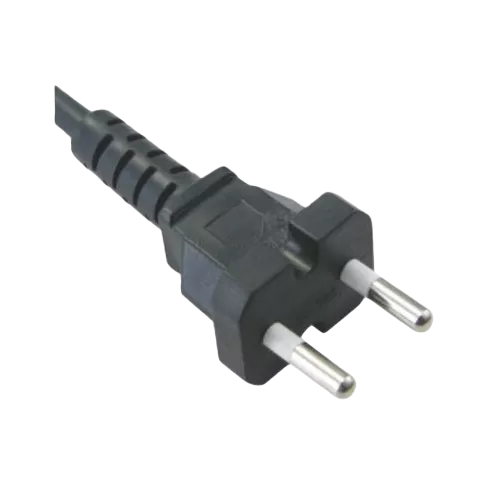When storing and handling Korean Standard Power Cords in bulk, it's important to follow best practices to ensure their integrity and usability:
Environment: Choose a storage environment that maintains consistent temperature and humidity levels suitable for electrical components. Ideally, store power cords in a dry, well-ventilated area to prevent moisture buildup, which can lead to corrosion of metal components and degradation of insulation over time. Avoid storing near sources of heat or direct sunlight, as prolonged exposure can accelerate aging and weaken the outer sheathing and insulation materials. Chemicals such as oils, solvents, or cleaning agents should be kept away to prevent potential contamination that could compromise electrical conductivity or safety standards.
Organization: Implement a systematic organizational strategy to optimize storage space and facilitate efficient inventory management. Group power cords by length, gauge, and type of plug to streamline retrieval and deployment processes. Utilize shelving units, storage bins, or racks with clearly labeled compartments or sections to categorize different types of cords. Consider using color-coded labels or barcode systems to enhance visibility and ease of identification during inventory checks and replenishments. This structured approach minimizes handling errors and reduces the risk of accidental damage during storage.
Packaging: Select appropriate packaging materials that provide adequate protection against physical damage, dust, and environmental contaminants. Use durable corrugated cardboard boxes or plastic bins with secure lids to shield power cords from impact during handling and transportation. Ensure packaging materials are clean and free from debris or moisture that could compromise the integrity of the cords. For added protection, consider using foam inserts or cushioning materials inside packages to absorb shocks and prevent movement that could cause abrasion or kinking of the cords.
Avoid Tangling: Prevent tangling and coiling issues by employing proper bundling techniques when storing power cords in bulk. Use recommended coil diameters and avoid tight bends or twists that could stress the internal wiring or insulation. Secure coils with reusable cable ties or Velcro straps to maintain neatness and prevent entanglement during storage. Regularly inspect stored cords to ensure they remain properly coiled and free from knots or snags that could lead to physical damage or operational issues when deployed.
Rotation and Inventory Management: Implement a structured inventory management system, such as a first-in, first-out approach, to optimize stock rotation and minimize the storage of aged inventory. Regularly audit inventory levels and conduct visual inspections of stored power cords to identify any signs of wear, degradation, or potential defects. Rotate inventory periodically to ensure that older stock is used before newer arrivals, reducing the risk of product obsolescence or deterioration.
Quality Control and Inspection: Establish rigorous quality control procedures to monitor the condition and performance of stored power cords throughout their lifecycle. Conduct routine inspections for visible defects, such as cuts, abrasions, or exposed conductors, that could compromise electrical safety or operational reliability. Implement testing protocols, where applicable, to verify compliance with industry standards and specifications for electrical conductivity, insulation resistance, and durability. Promptly quarantine and address any non-conforming or damaged products to prevent potential safety hazards or operational disruptions during deployment.
K2-15 Two-core Korean plug power cord



 English
English عربى
عربى











